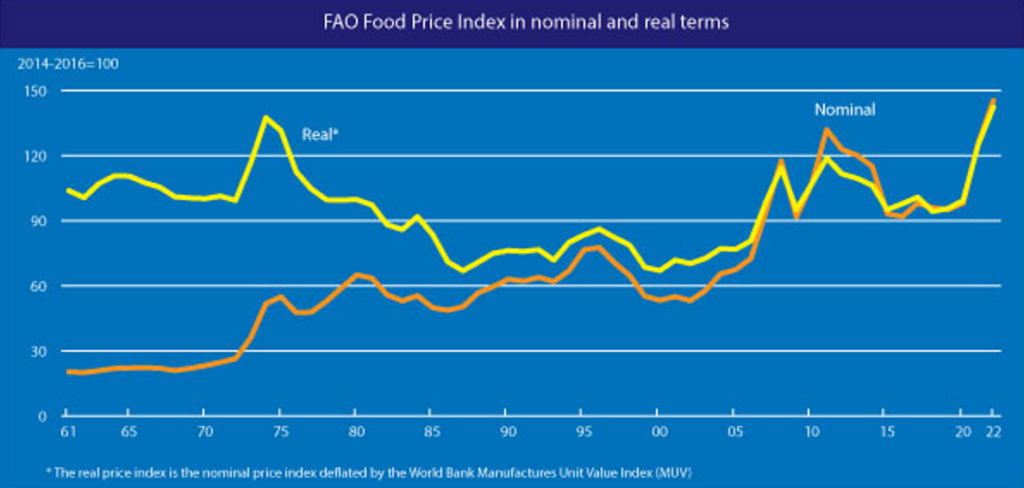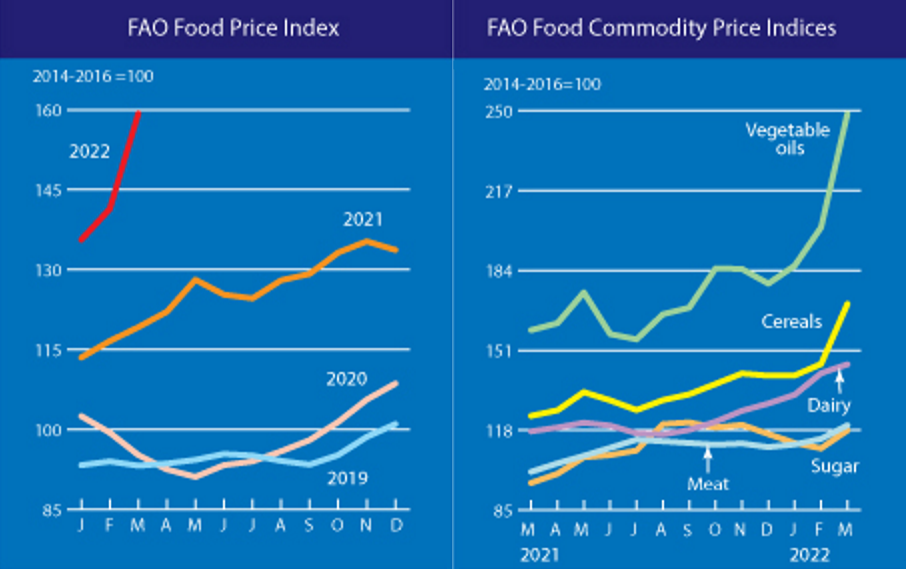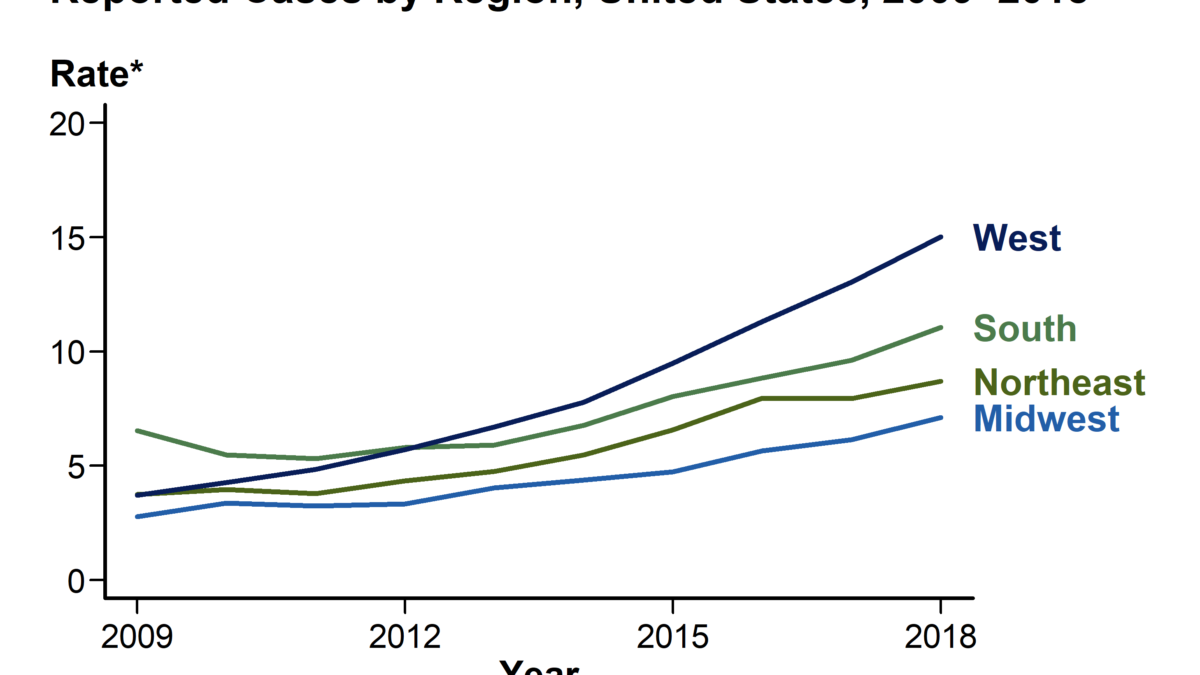The FAO Food Price Index makes a giant leap to another all-time high in March 2022

8 April 2022 (FAO) – The FAO Food Price Index (FFPI) averaged 159.3 points in March 2022, up 17.9 points (12.6 percent) from February, making a giant leap to a new highest level since its inception in 1990. The latest increase reflects new all-time highs for vegetable oils, cereals, and meat sub-indices, while those of sugar and dairy products also rose significantly.
The FAO Cereal Price Index averaged 170.1 points in March, up 24.9 points (17.1 percent) from February, marking its highest level on record since 1990. This month’s increase reflected a surge in world prices of wheat and coarse grains, largely driven by conflict-related export disruptions from Ukraine and, to a lesser extent, the Russian Federation. The expected loss of exports from the Black Sea region exacerbated the already tight global availability of wheat. With concerns over crop conditions in the United States of America (USA) also adding support, world wheat prices rose sharply in March, soaring by 19.7 percent. After climbing upwards by 20.4 percent in March, international coarse grain prices marked a record high, with maize, barley, and sorghum prices all reaching their respective highest levels on record since 1990. Significantly reduced maize export expectations for Ukraine, a major exporter, on top of elevated energy and input costs, underpinned a 19.1-percent increase in world maize prices month-on-month. Strength in maize markets influenced other coarse grains, with sorghum prices increasing by 17.3 percent, while supply uncertainties added further pressure on already tight barley markets, pushing barley prices up 27.1 percent from February. Meanwhile, contrasting trends across the various origins and qualities kept the March value of FAO’s Rice Price Index little changed from February levels and still 10 percent below its year-earlier value.
The FAO Vegetable Oil Price Index averaged 248.6 points in March, up 46.9 points (23.2 percent) from February and hitting a new record high. The sharp rise of the index was driven by higher sunflower, palm, soy and rapeseed oil prices. International sunflowerseed oil quotations increased substantially in March, fuelled by reduced export supplies amid the ongoing conflict in the Black Sea region. In the meantime, palm, soy and rapeseed oil prices also rose markedly, buoyed by rising global import demand in the wake of sunflower oil supply disruptions. Moreover, while world palm oil values received additional support from lingering supply tightness in major producing countries, soyoil prices were underpinned by concerns over reduced export availabilities in South America. Noticeably, volatile and higher crude oil values also lent support to international vegetable oil prices.

The FAO Dairy Price Index averaged 145.2 points in March, up 3.7 points (2.6 percent) from February, marking the seventh consecutive monthly increase and lifting the index 27.7 points (23.6 percent) above its value a year ago. The upward trend of dairy product prices persisted, mainly supported by the tightening of global markets due to inadequate milk output in Western Europe and Oceania to meet global demand. Quotations for butter and milk powders rose steeply, underpinned by a surge in import demand for near- and long-term deliveries, especially from Asian markets, and solid internal demand in Western Europe. Meanwhile, cheese markets were also facing a tight supply situation due to strong internal demand in Western Europe, but the index value eased marginally, reflecting the impacts of currency movements.
The FAO Meat Price Index averaged 120.0 points in March, up 5.5 points (4.8 percent) from February, also reaching an all-time high. In March, pig meat prices registered the steepest monthly increase on record since 1995, underpinned by supply shortfalls of slaughter pigs in Western Europe and a surge in internal demand in light of the upcoming Easter holidays. International poultry meat prices firmed, fuelled by reduced supplies from leading exporting countries following avian flu outbreaks, further impacted by Ukraine’s inability to export poultry meat amid the ongoing conflict. Bovine meat prices also firmed as the tight supply of slaughter-ready cattle persisted in some key producing regions, while global demand remained solid.
The FAO Sugar Price Index averaged 117.9 points in March, up 7.4 points (6.7 percent) from February, reversing most of the previous three months’ decline and reaching levels more than 20 percent above those registered in the corresponding month last year. The March rebound in international sugar price quotations was mainly prompted by the sharp increase in international crude oil prices, which raised expectations of a greater use of sugarcane for ethanol production in Brazil in the upcoming season. Additional support to world sugar prices was lent by the sustained strengthening of the Brazilian Real against the US Dollar, which tends to restrain producer selling due to lower returns in local currency. However, the good harvest progress and favourable production prospects in India, a major sugar exporter, contributed to easing the price hike and prevented larger monthly price increases.
The FAO Food Price Index makes a giant leap to another all-time high in March


